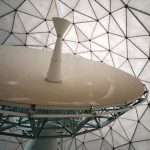Qualcomm’s New Chip: More Power, More Features, Same Ol’ GNSS
In early December, Qualcomm made its annual announcement of a new chip for phones and wearables in the coming year. Qualcomm’s flagship system-on-chip will power a range of devices launching in 2020, with lots of new and exciting (to smartphone addicts) capabilities; just not much — make that nothing — new in satellite-based navigation derivatives.
By Inside GNSS













